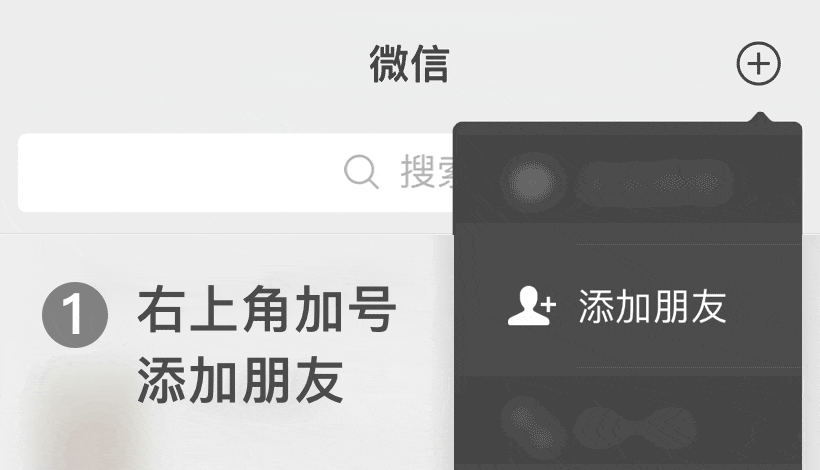Why is the compatibility of the slot groove of the commodity sorting machine relatively strong
The grid chute of the product sorting machine (referred to as the "grid chute") is the core conveying component that connects the "sorting execution mechanism" and the "destination grid" in the sorting system. Its "strong compatibility" is essentially achieved through four dimensions: structural design adaptability, material performance universality, functional modularization, and scenario based p
The grid chute of the product sorting machine (referred to as the "grid chute") is the core conveying component that connects the "sorting execution mechanism" and the "destination grid" in the sorting system. Its "strong compatibility" is essentially achieved through four dimensions: structural design adaptability, material performance universality, functional modularization, and scenario based process optimization, breaking the limitations of different products (size, weight, shape), different sorting systems (equipment models, sorting logic), and different application scenarios (industry requirements, conveying requirements), and achieving seamless adaptation of "multiple categories, multiple systems, and multiple scenarios". Specifically, it can be analyzed from the following core levels:
1、 Structural design: Covering product form differences with "flexible adaptation"
The core function of the grid chute is to "stably transport different forms of goods", and its structural design fundamentally solves the shortcomings of traditional chutes that are only suitable for a single category through "no rigid restrictions and adjustable parameters":
1. Non rigid contact conveying path: adapted to differences in product size and weight
Customizable slot structure for width/depth: The slot width (commonly 150-800mm) and depth (50-300mm) of the grid groove can be customized according to the size of the target product (such as express packages, e-commerce products, fresh fruits and vegetables), avoiding problems such as "narrow slot jamming" and "shallow slot dropping"; At the same time, the groove body adopts a "U-shaped/arc-shaped cross-section" (instead of a right angled hard edge), and there is no mandatory requirement for the packaging form of the goods (bagged, boxed, irregular parts) - for example, bagged clothes can slide along the arc-shaped groove wall, boxed electronic products can be stably transported along the U-shaped groove, and there is no need to design separate grooves for different shapes of goods.
Slope design with graded buffering: The conveying slope of the chute (usually 3 ° -15 °) can be adjusted to achieve "graded adaptation" by adjusting the height of the bracket:
Light and small items (such as cosmetic samples and file bags, weighing less than 0.5kg): Use a gentle slope (3 ° -5 °) to avoid damage to the bottom of the grid due to rapid gravity;
Medium weight components (such as household appliances and daily necessities, weighing 0.5-5kg): using a moderate slope (8 ° -12 °) to balance conveying efficiency and stability;
Large/hard shell items (such as suitcases, turnover boxes, weighing>5kg): Use a steep slope (12 ° -15 °), combined with bottom cushioning pads (such as EPE pearl cotton, rubber pads), to avoid product jamming.
This "adjustable slope+buffer adaptation" design allows the same chute to cover a weight range of "0.1kg-20kg", far exceeding traditional fixed slope chutes (only suitable for 1-3kg products).
2. Combination method of "modular splicing": adapted to sorting system and grid layout
The grid chute is not a single fixed component, but adapts to the structure and grid layout of different sorting machines through "standardized modules+flexible splicing":
Standardized interface design: The "input end" of the chute (connected to the sorting cart/belt of the sorting machine) adopts a uniformly sized flange interface (such as a standard connector with a width of 100mm and a height of 50mm), which is compatible with mainstream sorting equipment such as cross belt sorting machines, balance wheel sorting machines, slider sorting machines, etc. - for example, the grid chute of the same company can be connected to the "cart export end" of the cross belt sorting machine, and can also be adapted to the "diversion outlet" of the balance wheel sorting machine through an adapter, without the need to re mold due to equipment model changes.
Combination of conveying paths: Through the splicing of "straight section module, curved section module, and climbing/descending section module", complex paths such as "straight line conveying, 90 ° turning, and multi-layer grid docking" can be achieved. For example, in an e-commerce warehouse, the same set of chutes can be connected to the upper sorting machine and the lower grid through "straight section+one 90 ° curved section", or to the sorting system of different floors through "straight section+climbing section module", adapting to the spatial layout of the warehouse (such as narrow passages, high shelves), without the need to customize the overall chute separately for a specific layout.
2、 Material performance: compatible with product and environmental requirements with "universal characteristics"
The material selection of the grid groove revolves around the three core requirements of "low friction, wear resistance, and impact resistance", ensuring good adaptability to different products (surface material, vulnerability) and environments (humidity, dust), and avoiding compatibility shortcomings caused by material limitations:
1. Surface material with "low friction+high wear resistance": adapted to the surface differences of the product
The inner wall surface of the grid groove is often made of "high molecular weight polyethylene (UHMWPE)" or "modified polypropylene (PP)", and the core advantages of these two materials are:
Low friction coefficient (0.05-0.15): much lower than ordinary steel (0.5-0.8) and glass (0.4-0.6), regardless of whether the surface of the product is smooth plastic film (such as food packaging), rough woven bags (such as rice bags), or easily scratched paper boxes (such as express delivery boxes), it can slide smoothly along the chute - for example, paper boxes will not be damaged by excessive friction, and woven bags will not slip or jam due to insufficient friction, without the need to replace the inner wall of the chute for products with different surface materials.
High wear resistance (wear rate<0.001g/cm 2): Even if hard shell parts (such as metal cans and plastic turnover boxes) are transported for a long time, there will be no scratches or dents on the inner wall, avoiding "local jamming" caused by material wear; Simultaneously resistant to acid and alkali corrosion (able to withstand common humid environments in warehouses and neutral detergents used for cleaning), it can still be used stably in fresh food warehouses (high humidity) and chemical warehouses (slight dust), without the need to replace special material chutes due to environmental factors.
2. Overall material of "impact resistance+lightweight": suitable for product weight and installation scenarios
Impact resistance: The impact strength of UHMWPE material is 10 times that of ordinary PE. Even if medium weight parts (such as 5kg household appliance packaging boxes) slide off the top of the groove, it will not cause cracking or deformation of the groove, avoiding damage to the groove caused by excessive product weight;
Lightweight: The material density is only 0.93-0.96g/cm 3, which is 70% lighter than steel. It can be installed on the walls, columns, or ceilings of the warehouse through lightweight brackets without the need for additional reinforcement of load-bearing structures. For example, in old warehouses, multi-layer grid chutes can be installed without the need to renovate the ground, suitable for scenarios with limited space but diverse categories.
3�、 Functional design: covering industry demand differences with "scenario optimization"
Different industries (e-commerce, express delivery, fresh food, pharmaceuticals) have different core requirements for product sorting (such as anti damage, anti pollution, and anti skewing). The grid chute achieves "industry level compatibility" through flexible configuration of "additional functional modules", rather than just adapting to a single field:
1. Anti damage function: Suitable for fragile goods (fresh food, medicine, electronic products)
Built in buffer layer: EPE pearl cotton and rubber buffer strips are installed on the inner wall or bottom of the chute to form a "flexible package" for fresh products (such as fruits and eggs) and fragile electronic products (such as mobile phone screens and glassware) - for example, when conveying eggs, the buffer layer can absorb more than 80% of the impact force, and the damage rate is reduced from 5% of traditional chutes to less than 0.1%;
Deceleration guide block: An adjustable rubber guide block is installed in the middle of the chute to slow down the sliding speed of the product by increasing local friction. For example, when transporting bottled drugs, the guide block can reduce the speed of the product from 1.5m/s to 0.8m/s, avoiding the bottle body colliding with the bottom of the grid and causing the label to fall off or the bottle body to break.
2. Anti pollution/anti collusion function: suitable for the pharmaceutical and food industries
Food grade material+easy to clean design: For the food and pharmaceutical industries, the chute is made of food grade PP material (compliant with FDA and GB 4806 standards), with no dead corners or seams on the inner wall. It can be disinfected by high-pressure water gun or alcohol wiping to prevent products (such as snacks and oral medicine) from being contaminated by residual stains in the chute;
Partition isolation module: By installing detachable partitions in the chute, a single chute is divided into 2-3 independent small slots to achieve isolated transportation of "products of the same category but different batches". For example, in a pharmaceutical warehouse, the same chute can be used to transport "cold medicine (batch A)" and "fever reducing medicine (batch B)" separately through partitions, avoiding cross shipment and eliminating the need to set up separate chutes for different batches.
3. Traceability adaptation function: adapted to intelligent sorting scenarios
Reserved scanning/weighing interface: An interface for installing scanning guns and weight sensors is reserved in the middle of the chute, which can be directly integrated into the intelligent sorting system - for example, when transporting express packages, the scanning gun can read the package waybill information, and the weight sensor can verify the weight without the need for additional detection links outside the chute;
Anti static treatment: For the electronics industry (such as chips and circuit boards), the surface of the groove is coated with an anti-static layer (surface resistance of 10 ? -10 ? Ω) to prevent static electricity from adsorbing dust or damaging electronic components, and to meet the sorting needs of precision electronic products.
4����、 Industry adaptation logic: Breaking scene limitations with "common needs+segmented optimization"
The compatibility essence of the grid groove is to "grasp commonalities and leave individuality" - first meet the "basic conveying needs" of different industries through "structural modularization and material universality" (such as stability, no damage, and equipment adaptation), and then meet the "segmented needs" of various industries through "functional module installation" (such as pollution prevention, anti-static, traceability), achieving "one groove with multiple functions":
For the e-commerce/express delivery industry: the core requirement is to "cover multiple sizes of packages and adapt to high sorting efficiency", achieved through "wide adjustable chute+fast splicing module";
For the fresh food industry: the core demand is "anti damage and easy to clean", achieved through "buffer layer+food grade materials";
For the pharmaceutical industry: the core demand is "anti pollution and anti cross contamination", which is achieved through "disinfection and adaptation materials+partition boards";
For the electronics industry: the core requirement is "anti-static and scratch resistant", achieved through "anti-static coating+low friction inner wall".
 0512-52430590
0512-52430590
 0512-52430590
0512-52430590

 WeChat number:業(yè)神物流設備
WeChat number:業(yè)神物流設備
